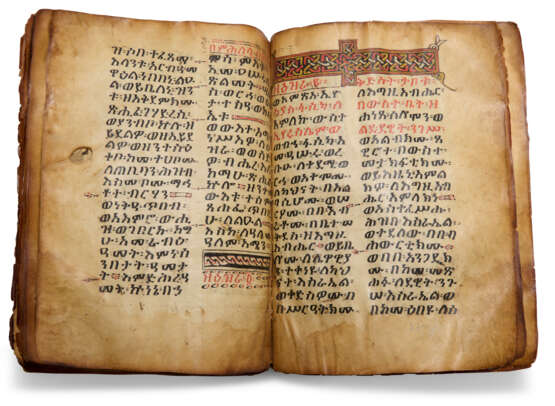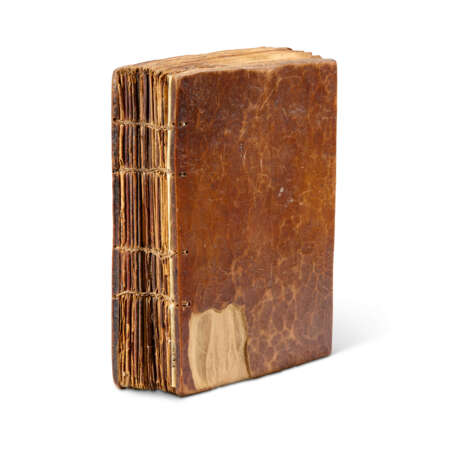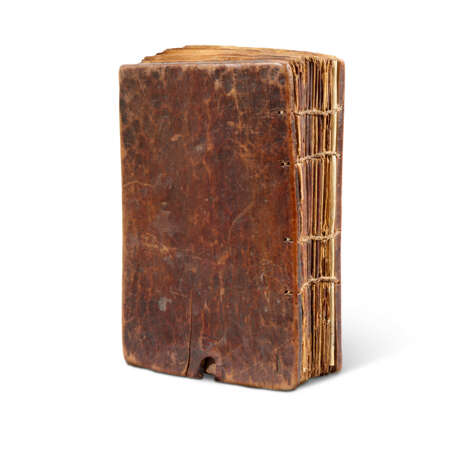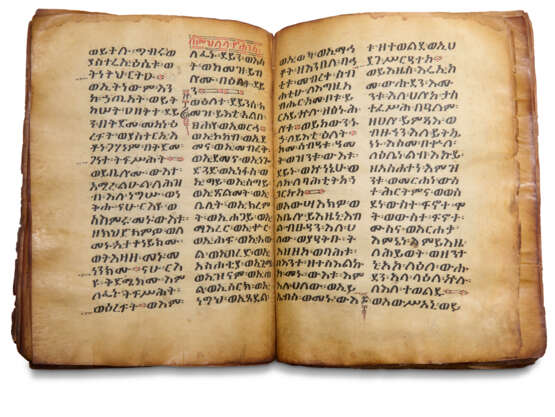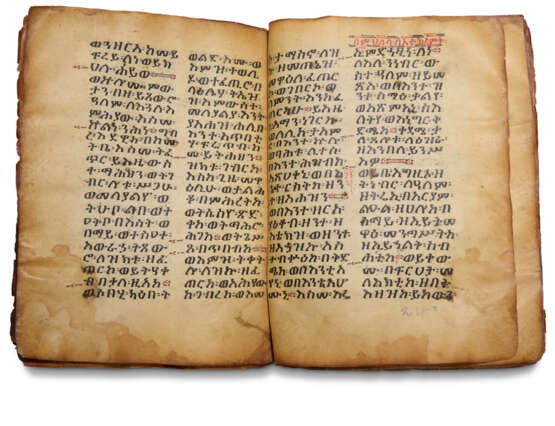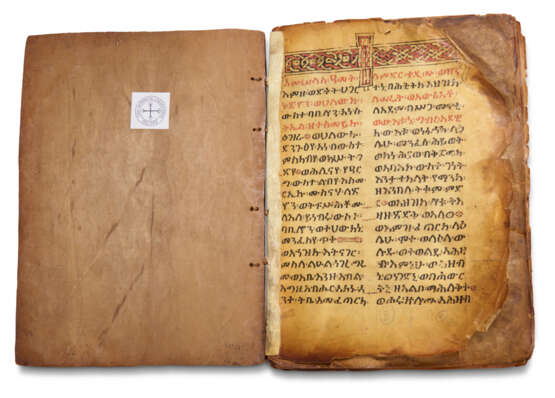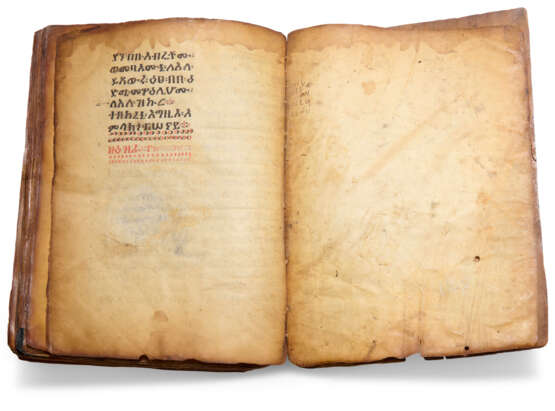ID 1214888
Lot 23 | The Apocalypse of Esdras
Estimate value
£ 20 000 – 30 000
The Apocalypse of Esdras, in Ge'ez, decorated manuscript on vellum [Ethiopia, c.1350-1450]
Perhaps the oldest surviving manuscript of the Apocalypse of Esdras.
205 x 280mm. 128 leaves, complete, mostly in gatherings of 8, modern European pencil foliation followed here, two columns of 22 lines written in black ink in Ge'ez in a large and elegant square script, some simple marginal signs and more complex caesura marks, three harägs, or ornamental top pieces in black, red and yellow marking the three major divisions of the text (slight water damage at the bottom of each leaf). Bound between 18th-century plain wooden boards.
Provenance:
(1) The manuscript has no colophon, but David Appleyard places the script firmly within the tradition of 'The Square Script' of Uhlig's period II (mid-14th to mid-15th century).
(2) Sam Fogg, London, acquired in December 1993 by:
(3) The Schøyen Collection, MS 1748.
Contents:
The Apocalypse of Esdras, Book I, beginning 'In the third year after our city of Zion fell I was in Babylon, I Sut'el who am called Ezra', ff.1-46v; Book II, beginning 'And Josiah brought the paschal lamb unto his God in Jerusalem and slaughtered the lamb on the fourteenth day of the first month', ff.47-83; Book III, beginning 'In the first year of the reign of Cyrus King of Persia when [his] word was done and he commanded through the mouth of Jeremiah, Cyrus the King of Persia rejoiced in his heart [...]', ff.83-127v; blank f.128.
The Apocalypse of Esdras is one of the apocryphal books of the Old Testament, the complete versions of which are best preserved only in the Ethiopian translations. The various books of Esdras are conventionally known by the numbers given to them in the medieval Latin Vulgate Bibles, which is the opposite order in which they are copied in the present manuscript.
Book I in the present manuscript, Apocryphal 2 Esdras 3-14, is not in the Septuagint and is called 4 Esdras in the Vulgate. Christians added chapters 1-2 and 15-16 of the work as known in Latin. It is an apocalyptic vision ascribed to the 5th-century character central to the two other books, a complaint about the subjugation of the Jews to the Romans, projected back into the situation of the capticity in Babylon. It must have existed in Greek, likely as a translation from Hebrew, but neither the Hebrew nor the Greek versions are extant except for late retroversions from Latin. According to Appleyard, this manuscript is 'as old or older than any of those previously used to edit the Ethiopic text'.
Book II, Apocryphal 1 Esdras, is 1 Esdras in the Septuagint and 3 Esdras in the Vulgate. It is an adaptation of the canonical Ezra using parts of Chronicles and Nehemiah, along with a new story about Darius' bodyguard and the wisdom of Zerubbabel.
Book III has the incipit of the canonical Ezra and includes the canonical Nehemiah (Vulgate 1 and 2 Esdras). It is a late part of the Jewish Scriptures, which describes the return of the Israelites from Babylonian exile and the rebuilding of the Temple and city wall.
There are around 21 manuscripts known of the first Book in the present manuscript, mostly dating from the 17th-19th centuries, but the remaining texts are not well represented.
Literature
Collins, J.J. and D.C. Harlow, eds., Early Judaism: A Comprehensive Overview, 2012, fig. 22.
| Place of origin: | Africa |
|---|---|
| Auction house category: | Medieval & renaissance manuscripts, Books and manuscripts |
| Place of origin: | Africa |
|---|---|
| Auction house category: | Medieval & renaissance manuscripts, Books and manuscripts |
| Address of auction |
CHRISTIE'S 8 King Street, St. James's SW1Y 6QT London United Kingdom | |
|---|---|---|
| Preview |
| |
| Phone | +44 (0)20 7839 9060 | |
| Buyer Premium | see on Website | |
| Conditions of purchase | Conditions of purchase |
